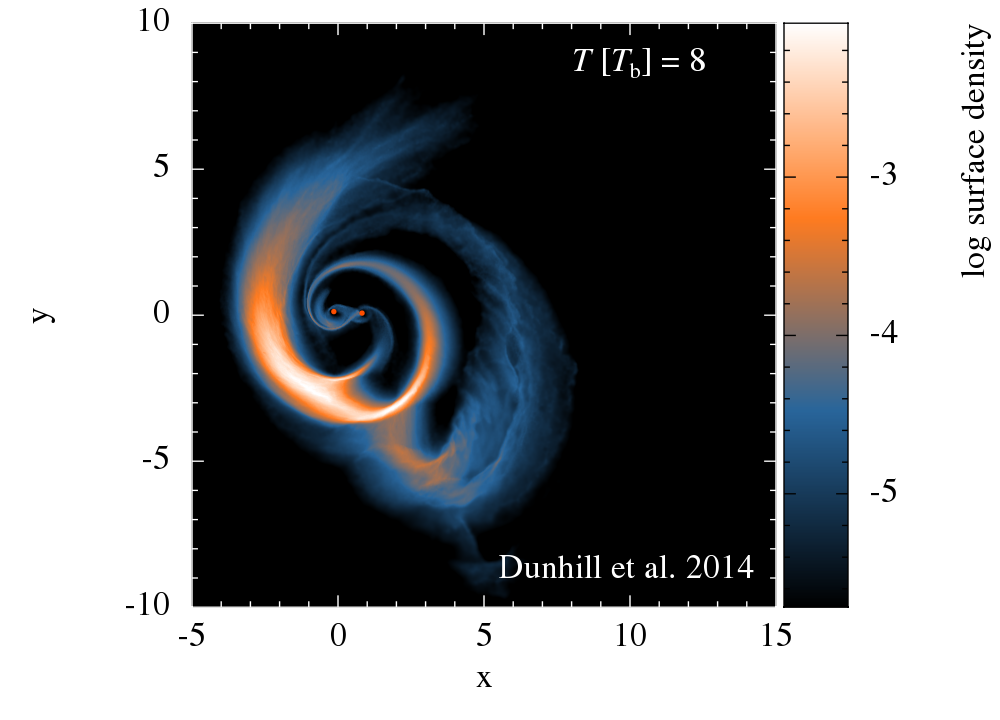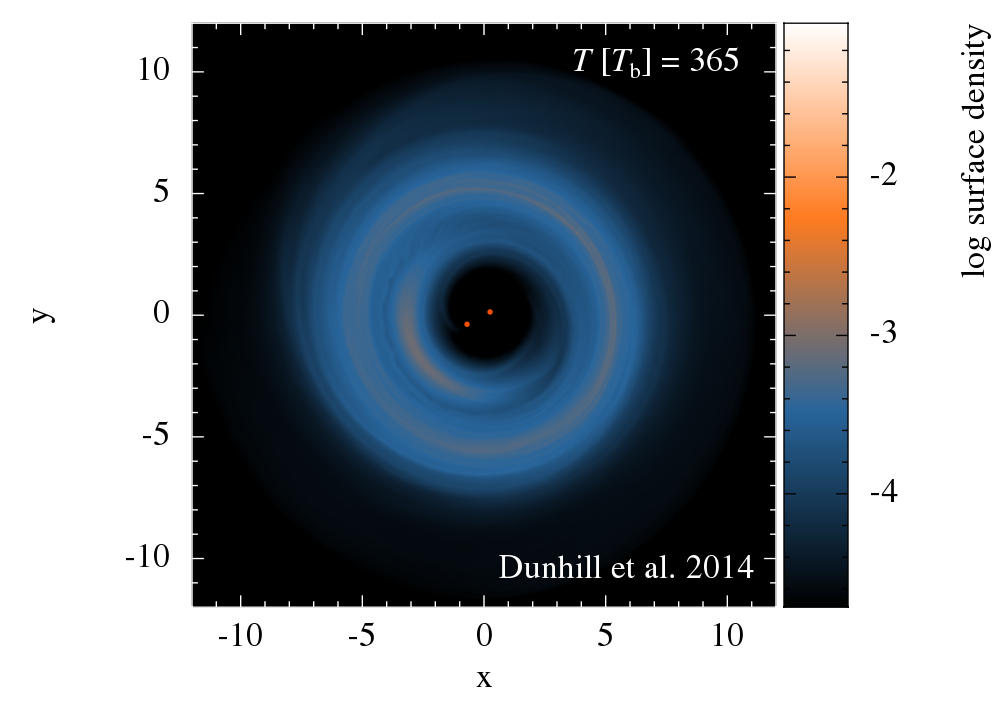In the aftermath of major galaxy mergers, the supermassive black holes (SMBHs) from the parent galaxies are thought to coalesce on short timescales, as very few (if any) binary SMBHs are observed. Dynamical friction between the SMBHs and the stellar field can drive the holes to parsec separations, but here the process stalls. This is known as the final parsec problem.
While accretion discs co-aligned with the plane of the binary are unable to drive coalescence on the required timescales, it has been shown that counter-aligned discs (those which rotate in a retrograde direction with respect to the binary orbit) are capable of solving the problem on much shorter timescales.
In Dunhill et al. (2014), we present SPH simulations of the formation of these discs from an infalling gas cloud under various assumptions regarding the could mass and cooling rates, showing that the final outcome hinges primarily on the thermal behaviour of the gas. Our key result is that if the cooling is fast enough for the discs to fragment, we find that retrograde discs will live for longer than prograde discs and thus can drive far stronger binary evolution over the course of a merger. Below are movies of some of these simulations.
This movie shows a low-mass cloud on a prograde orbit around the binary, with the planes offset by 15˚. The disc which forms in the simulation fragments after 393 binary orbits.
This movie shows a low-mass cloud on a prograde orbit around the binary, with the planes offset by 165˚ (15˚ from counter-alignment). The disc which forms in the simulation fragments after 511 binary orbits.
This movie shows a high-mass cloud on a prograde orbit around the binary, with the planes offset by 15˚. The disc which forms in the simulation becomes unstable to self-gravity after approximately 420 binary orbits.
This movie shows a high-mass cloud on a retrograde orbit around the binary, with the planes offset by 165˚ (15˚ from counter-alignment). The disc which forms in the simulation becomes unstable to self-gravity after approximately 400 binary orbits.
Versions of these movies can be downloaded from here.
The movie below is of the low mass prograde simulation, and requires a 3D viewer (for example the LOREO lite) for full enjoyment.




